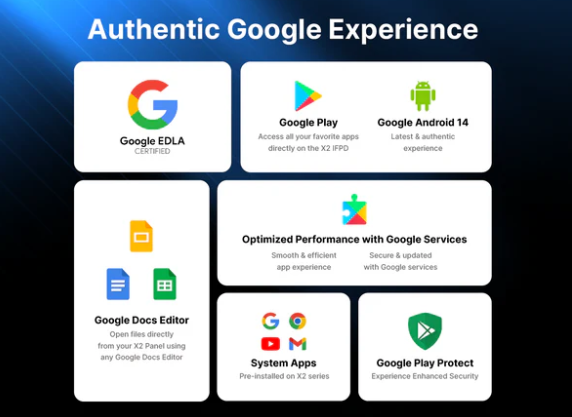The way we teach and learn has changed dramatically over the last decade. Chalk and duster have given way to projectors, and now projectors are being replaced by digital boards – interactive flat panels that make classrooms more dynamic and engaging. But for schools and institutions planning to make the switch, one key question always arises: What should we consider before investing in this technology?
Buying a digital board is more than just a purchase – it’s an investment in the future of education. The right choice can transform classrooms into hubs of curiosity, collaboration, and creativity. If you’re planning this upgrade, start by understanding not just the digital teaching board price, but the features, long-term value, and usability that come with it.
1. Classroom Size and Screen Dimensions
One of the first things to evaluate is classroom size. A small classroom may do well with a 55-inch board, but larger spaces require at least a 75-inch display to ensure visibility for all students. A mismatch here can lead to students at the back struggling to read or engage with the content.
Teachers should test how well text, diagrams, and videos appear from different angles and distances. The right size ensures inclusivity, making learning equally accessible to every student in the room.
2. Essential Features for Effective Teaching
Not all digital boards are created equal. While some offer advanced tools, others stick to the basics. At a minimum, look for:
- Touchscreen interactivity: Students and teachers should be able to write, draw, and interact seamlessly.
- Multi-device connectivity: Support for USB, HDMI, and Wi-Fi ensures lesson flexibility.
- Content integration: The ability to display slides, videos, and interactive apps directly on the board.
- Durability: Scratch-resistant glass and long-lasting performance for daily classroom use.
- Software support: Built-in apps or compatible teaching platforms that align with your school’s curriculum.
These features help create immersive experiences that make lessons memorable and engaging.
3. Teacher Training and Adaptability
A digital board is only as effective as the teacher using it. Before purchasing, ask:
- Will teachers receive training on using the board?
- Is the interface intuitive enough for quick adoption?
- Does it integrate with tools teachers already use?
Training ensures the investment doesn’t sit underutilized. A board with a steep learning curve may frustrate staff, while a user-friendly one empowers them to deliver engaging lessons with ease.
4. Evaluating the Digital Teaching Board Price
The digital teaching board price is often the first factor schools consider, but it shouldn’t be the only one. Prices vary depending on size, brand, and features. While it’s tempting to pick the cheapest option, low-cost boards may fall short in terms of durability and software support.
Instead, evaluate the value for money:
- How many years will the board last?
- What kind of warranty and service does the provider offer?
- Will it reduce the need for other devices like projectors or speakers?
In many cases, a mid-range option offers the best balance of affordability and performance.
5. Long-Term Maintenance and Upgrades
Digital boards are durable, but like any technology, they require maintenance. Consider:
- Is after-sales support reliable?
- Are software updates included in the package?
- Will the board remain compatible with future teaching tools and apps?
Schools that look beyond upfront cost to long-term reliability often save significantly in the future.
6. Comparing the Digital Board Price for Teaching
Understanding the digital board price for teaching is easier when you break down the categories:
- Entry-level boards – Affordable, but may lack advanced interactive tools.
- Mid-range boards – Offer essential features, good durability, and strong classroom performance.
- Premium boards – Ultra-HD resolution, advanced collaboration tools, and cloud-based teaching platforms.
Schools should identify their true needs and match them with the right pricing tier. For instance, institutions focusing on multimedia-heavy lessons may benefit from premium models, while schools needing everyday functionality can rely on mid-range solutions. You can explore the digital board price for teaching of a trusted model to see how features align with budget.
7. Student Engagement and Learning Outcomes
At the end of the day, the goal is better learning. A good digital board should boost student engagement through:
- Real-time quizzes and polls.
- Interactive lessons where students contribute directly on the board.
- Multimedia resources that simplify complex concepts.
When evaluating options, ask: Will this board help students learn more effectively and make teaching more impactful?
8. Accessibility and Inclusivity
Digital boards should cater to diverse learning needs. For example:
- Students with visual challenges benefit from larger, clearer screens.
- Special needs students gain from interactive visuals and tactile engagement.
- Remote learners can access saved lessons through cloud integration.
This makes the classroom more inclusive, ensuring no student is left behind.
9. Return on Investment (ROI)
Consider how the board will pay for itself over time:
- Reduced printing costs since lessons can be shared digitally.
- Lower maintenance compared to projectors.
- Higher teacher productivity and student performance.
Schools that factor in ROI often see that digital boards are not just costs – they’re modern education tools that deliver long-term value.
Final Thoughts
Before buying a digital board, schools must balance price, features, and long-term value. It’s not simply about the cost, but about the impact on teaching quality and student outcomes. The right choice ensures:
- Teachers feel empowered.
- Students remain engaged.
- Schools stay future-ready.
A digital board is more than a teaching aid – it’s an investment in shaping tomorrow’s learners. By carefully considering classroom size, features, training, and both short- and long-term costs, schools can ensure they make the smartest possible decision.
The future of education is interactive, inclusive, and digital. Choosing the right board today means preparing your students for the world of tomorrow.




